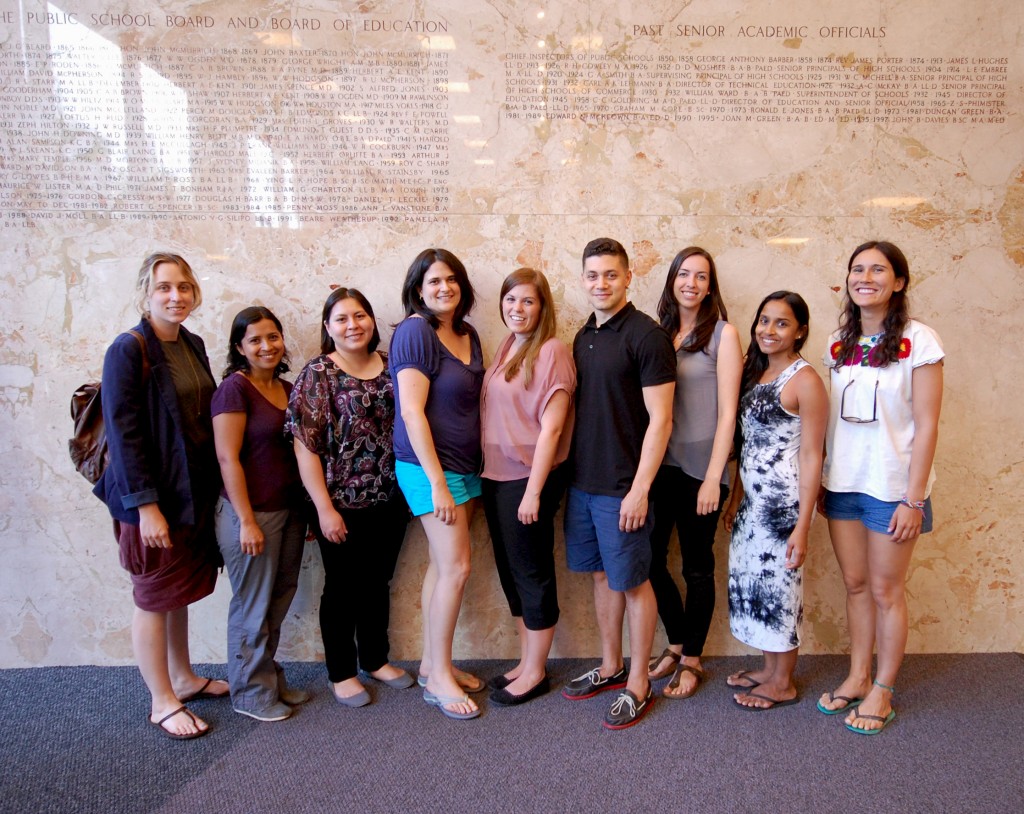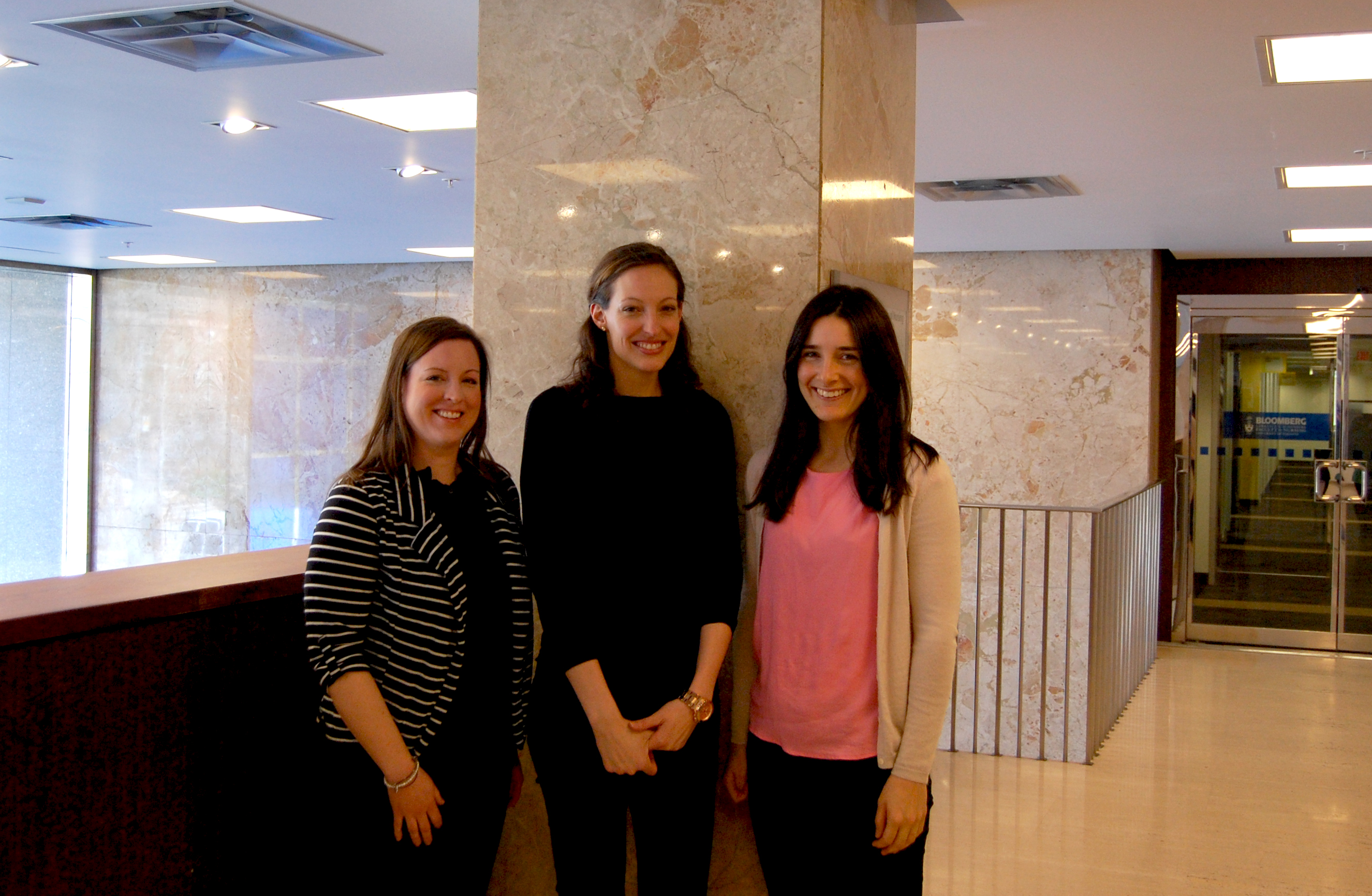(NUR 480 students)
A patient is more than the symptoms they present. Through elective classes on Aboriginal health, Bloomberg Nursing students are examining ways to effectively deliver health care to all Canadians in all communities. At the undergraduate and graduate level, students have opportunities to develop a deeper understanding of the health care needs of First Nations, Inuit and Métis people, and how to best provide care within the constraints of the Canadian health care system. A 10-week clinical placement in areas with a large Aboriginal population gave these students a firsthand experience in managing patient needs in remote locations.
In the spring, nine undergraduate nursing students in Lecturer Pamela Walker’s Aboriginal Health Option NUR 470 (Integrative Nursing Practicum) course travelled to northwestern Ontario, the Northwest Territories and the Yukon to complete their clinical placements. They become part of the communities, and witnessed local health care professionals advocate for improvements in patient care.
Lisa Jones and Mary Commandant spent 10 weeks in the Yukon at Whitehorse General Hospital. Working closely with a team of registered nurses (RNs) and registered practical nurses, Jones and Commandant immersed themselves in all aspects of patient care. Jones wanted to “learn more about the Aboriginal population by working closely with the community.” What she learned is that many individuals in the First Nations community are generous about sharing their culture.
Commandant, whose ancestry includes Mohawk, had a personal connection to the program. “I thought NUR 470 would offer a good experience to learn more about my own culture,” she says. The opportunity to shadow EMS, EMS Medevac and First Nations Health Programs (FNHP) Liaison Workers gave her a solid understanding of participating in health care in a remote setting. FNHP operates within the hospital and, offers services to Aboriginal patients such as accessing traditional medicines, organizing traditional meals and providing social support by Health and Social Liaison Workers. The Na’Ku (Healing Room), built outside of the hospital, allows Aboriginal patients and their families to practise traditional ceremonies and private rituals. By shadowing the Liaison Workers, Jones and Commandant were able to revisit patients on the medical floor, not as their nurses but as listeners while the Liaison Worker sat with the patient to discuss any social issues they might be experiencing. Hearing the different perspective from the patient on their situation was a reminder to the students you need the whole story to assess and achieve an optimal outcome.
Ilana Lowes whose ancestry includes Ojibwe and who also had a personal connection to the program, called Behchoko, N.W.T., home while she completed her placement at the Marie Adele Bishop Health Centre. Lowes usually worked with seven nurses at the centre, but that number would drop when some of the nurses left to provide care at fly-in communities. Tuesdays were clinic days for doctors, and a paediatrician came once a month – it was a far different care system than in Toronto. The community relies on nurses for their health care needs, and it’s nurses who are accessible after hours to consult over the phone and meet the patient at the clinic, if warranted.
“I really had to think on my feet, consult with other nurses and use what I’ve learned in class and in other placements to make assessments,” says Lowes. “With fewer health professionals around, you’re given more responsibility, and I found that a very rewarding challenge.”
Given the opportunity to participate in a traditional overnight puberty camp for boys, Lowes helped the organizers by offering her nursing advice at their outback camp. This rite of passage, involved time-honoured practices such as setting snares and traps, and offering guidance to the boys as they become men. Through experiences like this, Lowes completed her placement with a feeling that all of her hopes and expectations had been met.
(l to r: Meghan Henderson, Leah Jodoin and Rose Patterson)
In 2011, Bloomberg Nursing introduced the Primary Health Care – Global Health emphasis to its master’s program and for the first time, nurse practitioner (NP) students had the opportunity to complete NUR 1110 in an Aboriginal community. Three students participated in 2013, venturing to Fort Smith, N.W.T., Manitoulin Island, Ont., and other remote communities for their final clinical consolidation. Meghan Henderson completed 160 clinical hours at the Fort Smith Health and Social Services Authority working in the medical clinic with Julie Lys, an NP who grew up in the area and is an integral part of the community.
“The experience was definitely more than I expected,” says Henderson. “I was really welcomed by the community, the health centre and my preceptor, and I had the opportunity to gain valuable clinical skills.”
Leah Jodoin and Rose Patterson travelled together to Manitoulin Island to complete their hours at the Noojmowin-teg Health Centre (NTHC). In Ojibwe, Noojmowin-teg means “a place of healing” and the Centre is one of 10 designated Aboriginal Health Care Access Centres in Ontario. They quickly integrated into the community from working at the Centre and also driving into the farther communities to assess patients. Seeing first-hand some of the barriers residents faced to improve their health care, Jodoin and Patterson recognized that while an assessment may look good on paper, it might not reflect the patient’s current situation.
“For example, in the communities there were no sidewalks and wild dogs roam at night so prescribing exercise was easy to do but hard to implement when you can’t even walk in your neighbourhood,” says Jodoin. “It really reinforced the notion to practise health in the context of the population, not the textbook, and was a valuable learning experience.”
Coming away from their placements with greater clinical, theoretical and personal growth, the students all agree that this opportunity as shaped how they will provide health care in whatever nursing capacity they undertake.

